If you find an urgent problem happening in your car, you’ll either need to exit and car and/or contact the driver or police. While there are dedicated metro police, chances are they won’t be right there when an emergency happens and you’ll need to contact them via other methods.
If your Korean language ability isn’t the best, pull out your smartphone and call emergency services at 119. They will get an interpreter on the line if needed. Important information is the exact car you are in. You can find that number above the doorway to connecting cars. Here we see our car number is 1213. This information is critical for first responders to quickly find you and the problem.
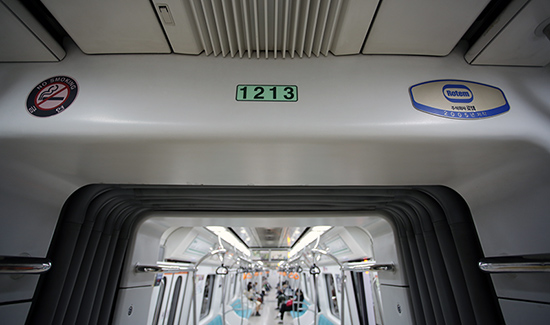
If your Korean is good and think a talk with the conductor is the best approach, find the radio next to the doorway to a connecting car. They are located at roughly eye level, as this image illustrates.
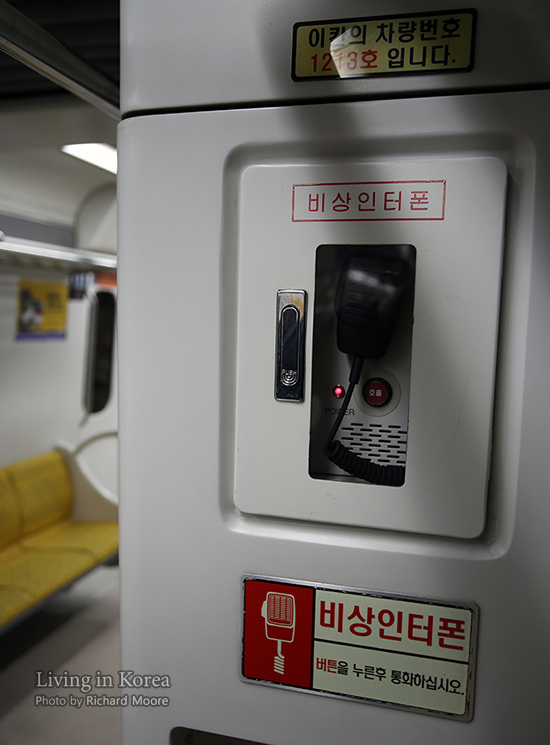
Just like before, you’ll need to tell the driver the exact car you are in. Sometimes they post the car number near the radio, just for this reason. In this instance, we are in car number 1002.
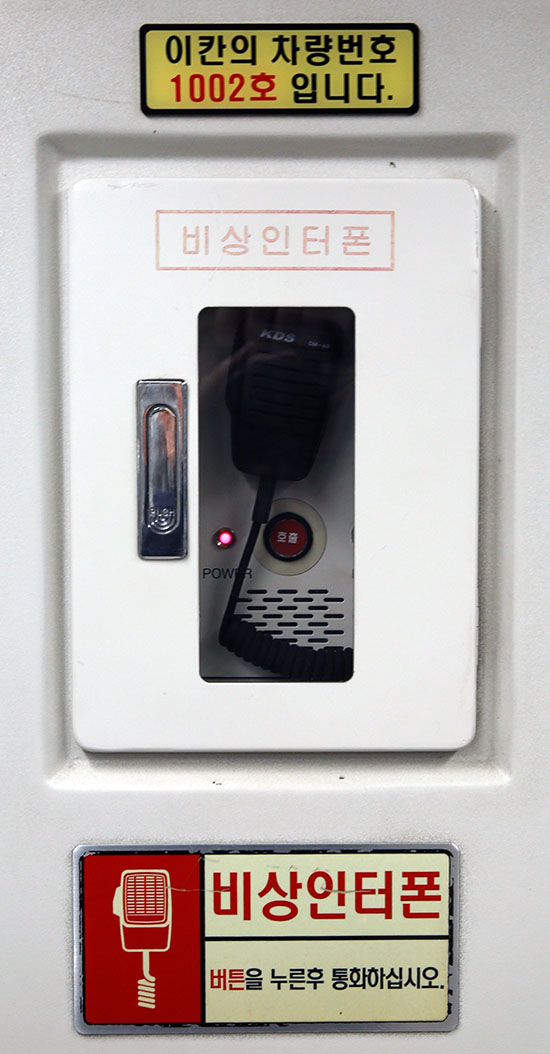
If you find yourself in a subway car during an emergency, you’ll need to exit the vehicle. Some rolling stock is designed for people to escape through the normal doors. Other kinds of rolling stock, for example those on the Shinbundang Line, are designed for people to escape with ladders that pull out of the vehicle. If you are in a tunnel, you may need to get out of the car and wait in the tunnel. Make sure you are near a wall and not waiting on or near any track as other trains might not yet know about the emergency. As there are different systems, it is difficult to specify what to do for all of them. Occasionally safety videos will play instructing you what to do in an emergency in a tunnel.
If you are in a subway station and there is an emergency, exit the vehicle, go through the station, and go above ground. The doors of a subway car are closed for general safety but need to be opened for an emergency. The conductor has an override which releases the pressure on the doors so people can easily leave.
If the conductor does not release the pressure, it will be nearly impossible to forcibly pull the doors open manually. As such, there are local overrides as this sign shows. The process to open the doors of a subway car in an emergency is nearly identical to opening the doors of a bus in an emergency. In a subway car, the pressure release value will be located next to the doors and will either be just above the floor or closer to eye level. In this first example, the valve is located near the floor.
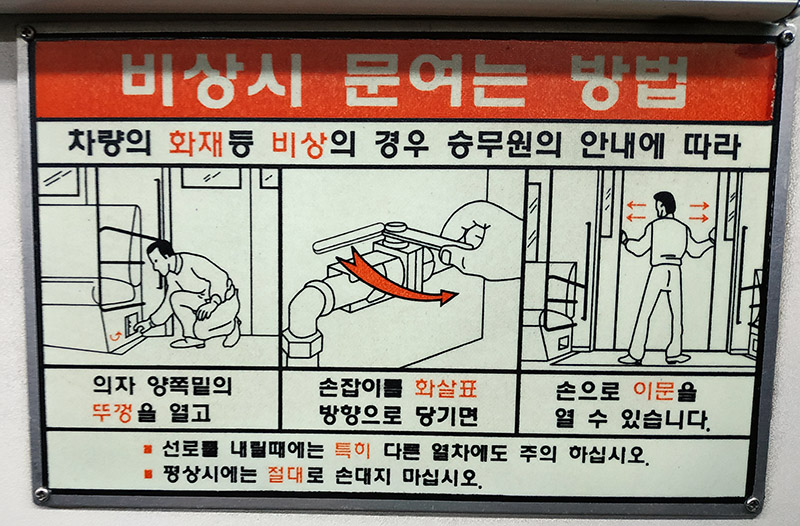
Step 1: Get on your hands and knees next to the door you wish to exit. Locate the small panel in the side of the seats. It will not be locked.
Step 2: Pull the toggle on the value toward you. This releases the pressure that keeps the doors closed.
Step 3: The doors should have little to no resistance. Pull the handles in the doors to slide the doors open.
The small panel is easy to locate in a diagram, but can be difficult to spot while standing. In the picture below, it is just barely visible under the “AIL” in KORAIL.
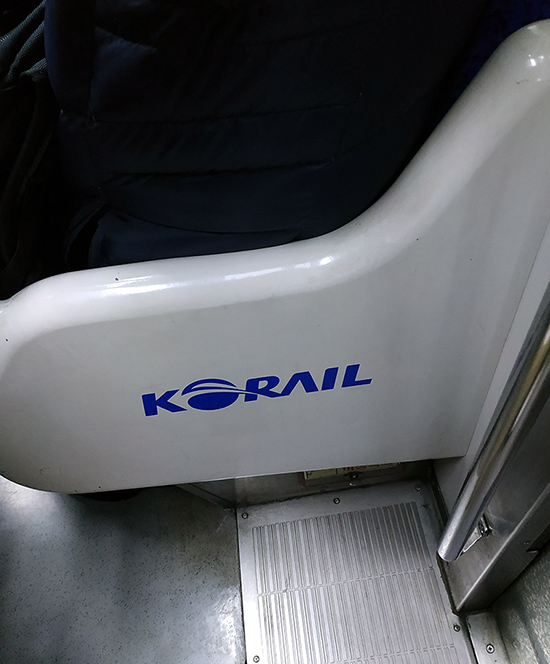
If you get on your hands and knees, it is significantly easier to spot. While there is no English, the picture shows what to do in an emergency. For reference, the Korean says 출입문 비상콕크 (出入門 非常콕크, churimmun bisangkokkeu) which means the value to open the door in an emergency. Open the latch, turn the lever to open the value, stand up and pull the doors open.

The other design has a value closer to eye level. Here we can see the doors, some seats, and the directions and valve next to the door.
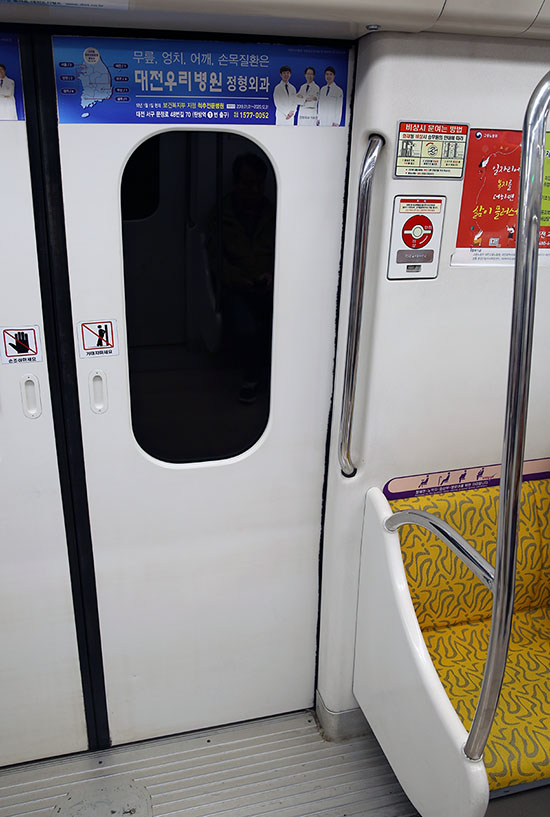
The directions are nearly identical, except you don’t need to get on your hands and feet. The value itself is also a slightly different design.
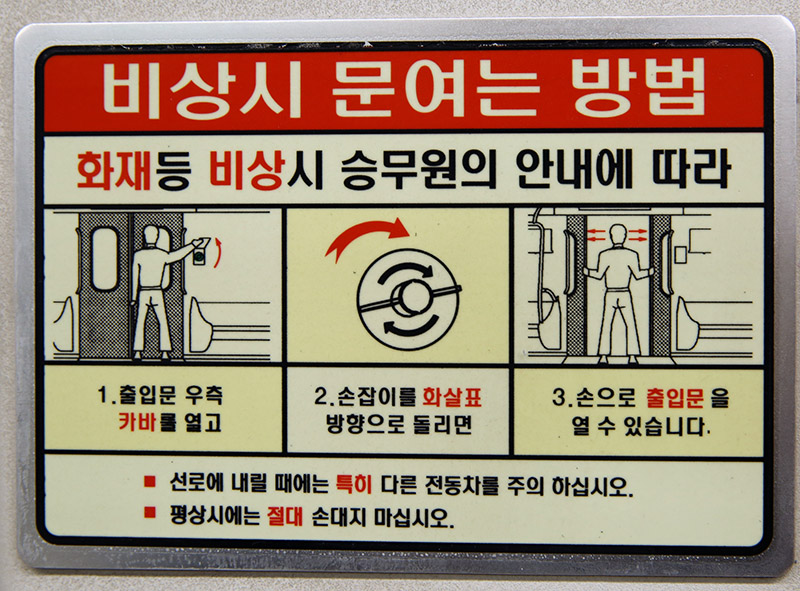
To access the valve, we need to first open the latch, which opens upward. Even if you cannot read Korean, the arrow tells you which direction to turn the knob. Pull the doors open and exit the vehicle.
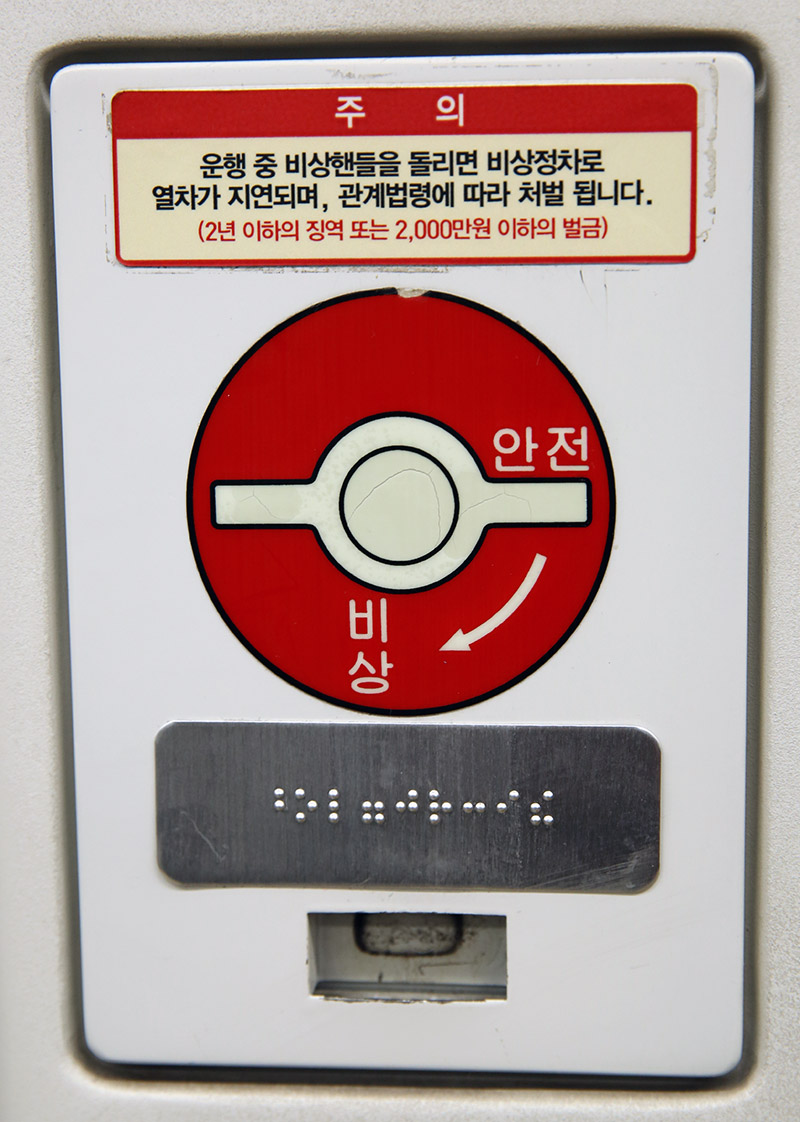
Now you can exit the vehicle, but perhaps you are in a station but not lined up with the safety screen doors. This isn’t a problem as there are panic bars (Wikipeda) or a door knob installed on the reverse side of the glass panels. Here is a view from the platform looking towards the safety screen doors.
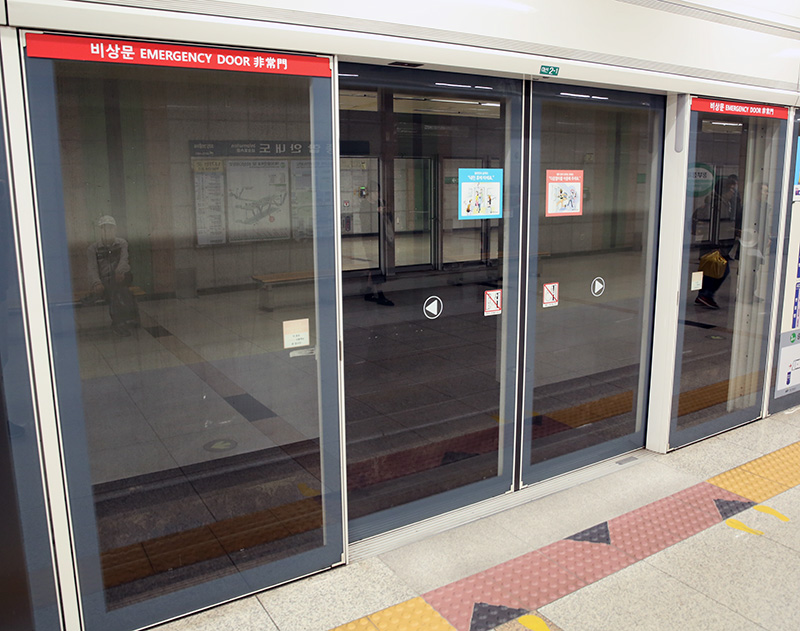
The signs above these emergency exits are also multilingual.

These safety precautions, along with others, including flame resistant fabric for seating, have been rolled out throughout the subway systems largely as a response to the notorious Daegu subway fire of 2003 (Wikipeda).